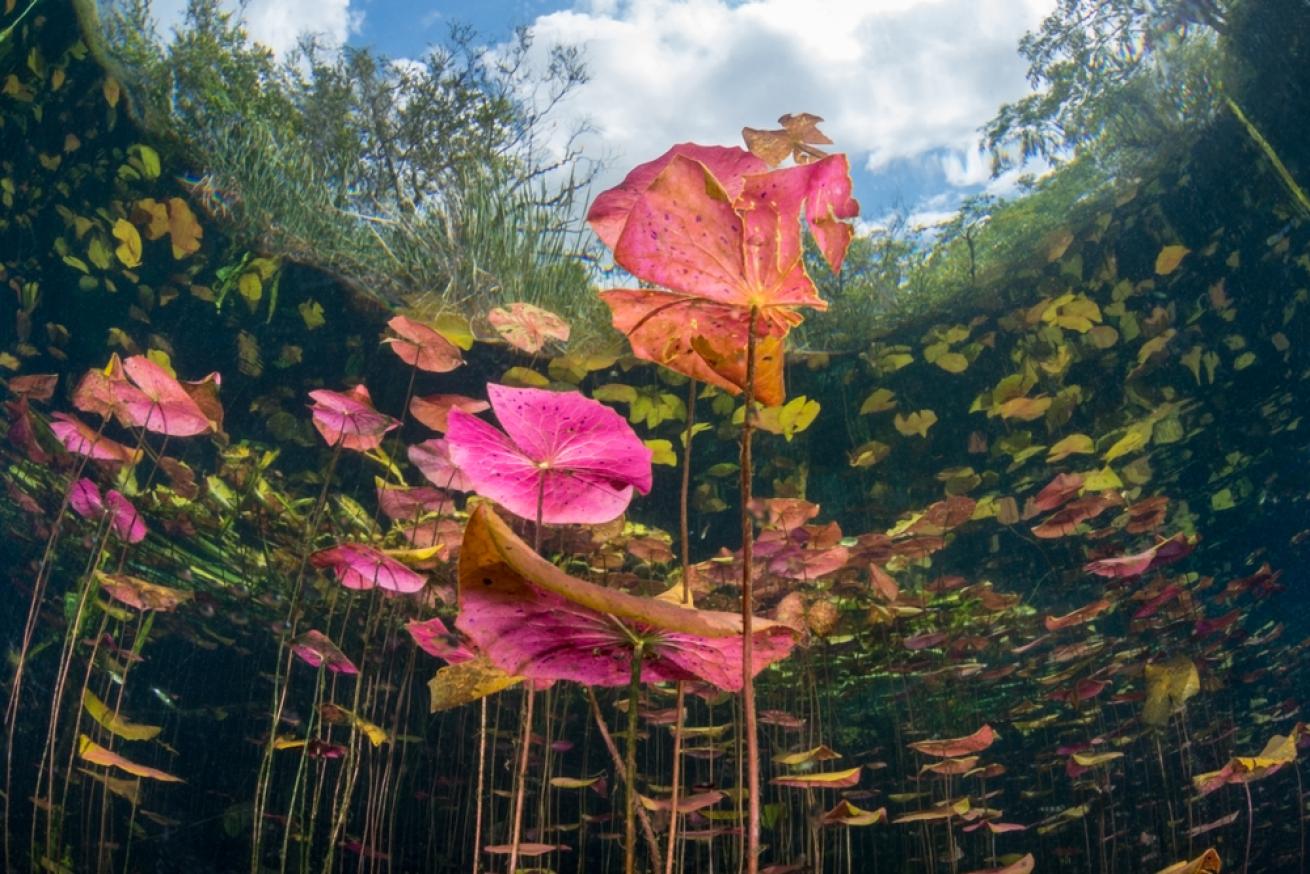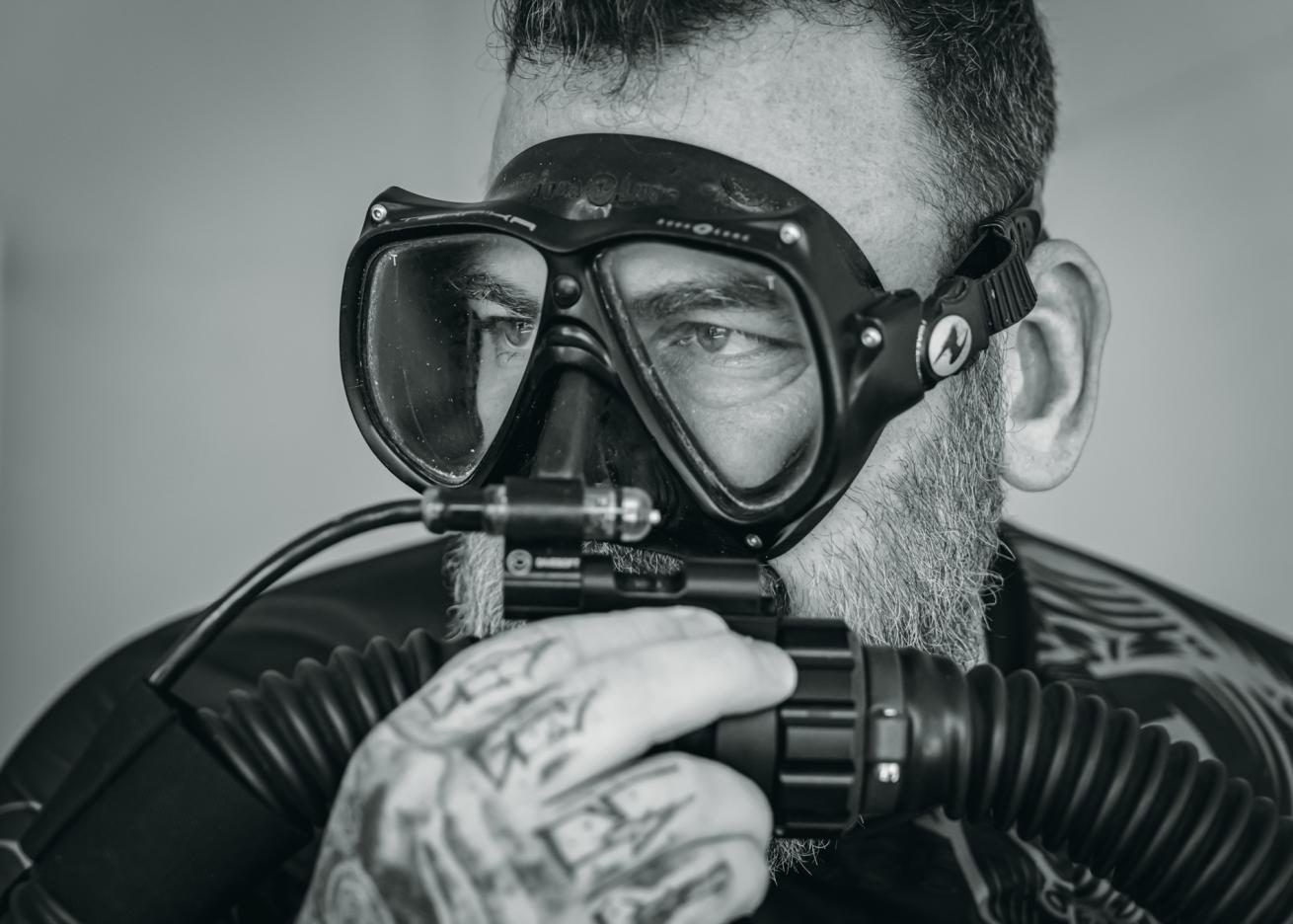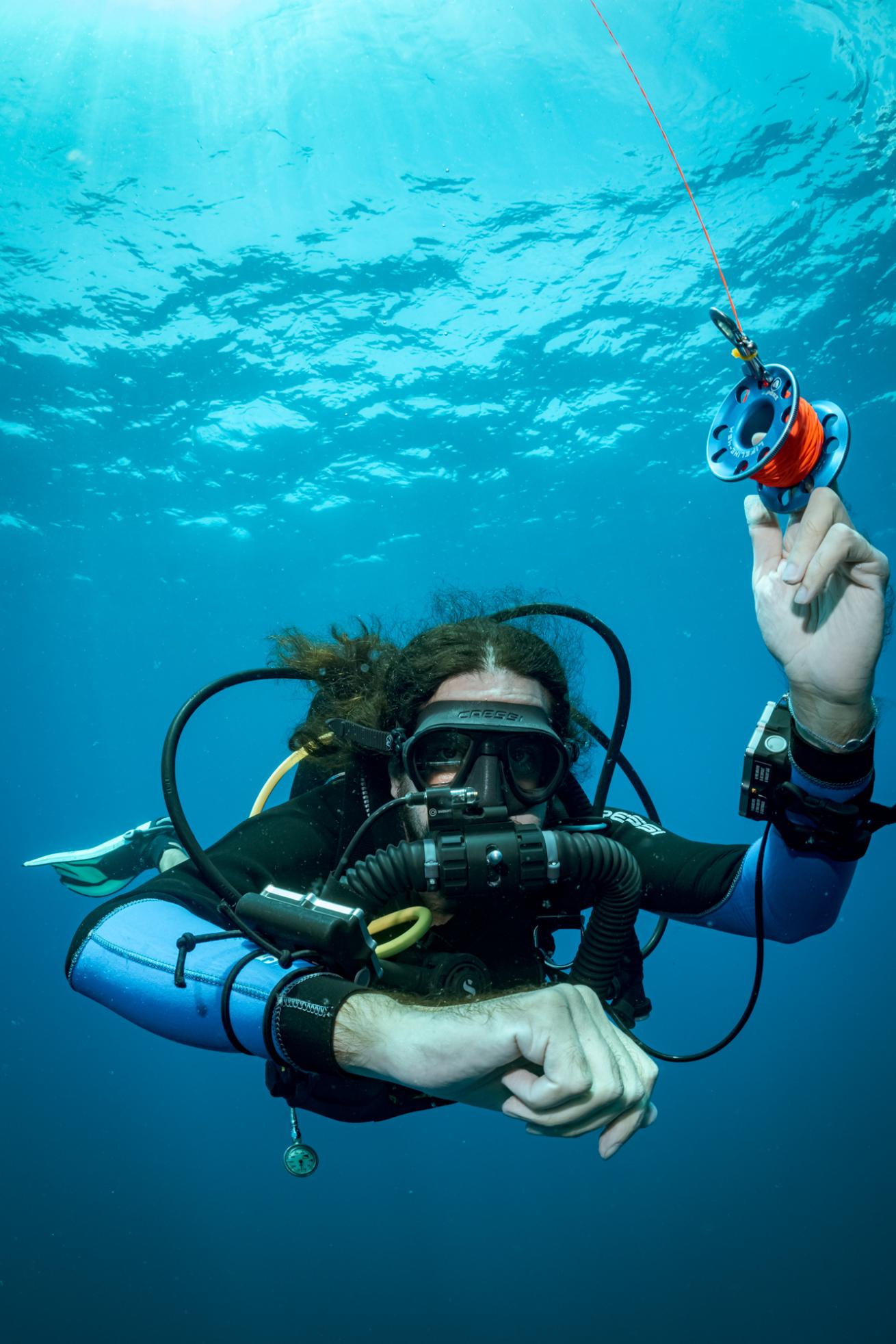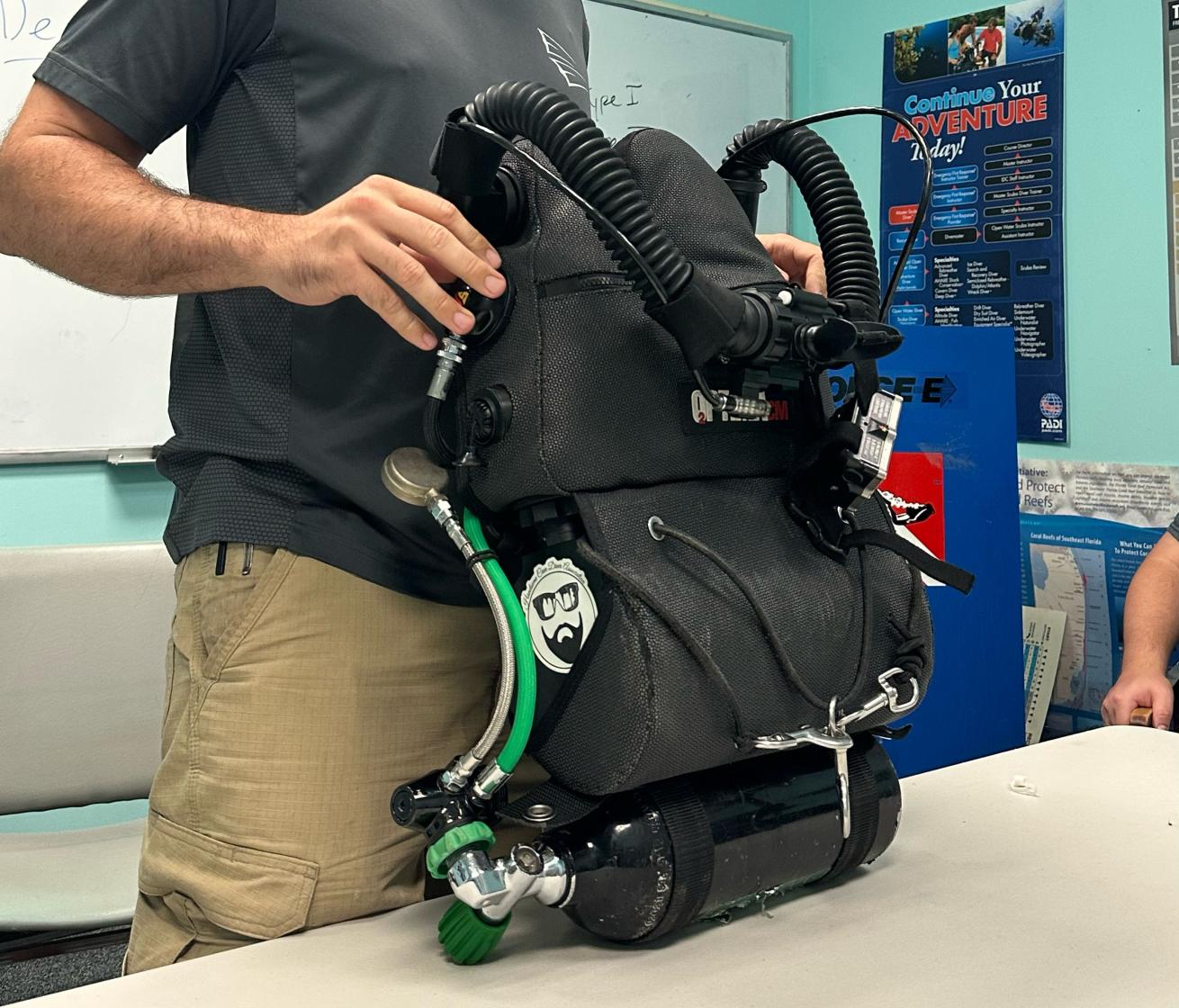My Introduction to Diving a Rebreather

Shutterstock.com/Nick_PolanszkyThe enchanting views of Carwash, a freshwater spring, or cenote, in Mexico.
Hovering motionless just inches above a lush green, grassy bottom, I feel like I’ve just unlocked superpowers. As I take my first-ever breaths on a rebreather, I’m astonished at how silent the water is around me. I can hear the underground river flowing into the small cenote from the cavern entrance in the distance. A few feet before me, a school of Mexican tetra playfully goes about their business nibbling at the grass and circling one another.
They begin to move closer, but before I can realize what is happening, my head is now surrounded by a cloud of small silvery freshwater fish, with some looking directly into my eyes. Their funny little faces with large eyes and tiny smiling mouths are reminiscent of anime characters. I laugh aloud at the thought, causing them to dart forward cautiously before slowly returning to peer into the glass lenses of my mask. I’ve done thousands of dives over my career, yet this one feels so beautifully strange. Before I can further lose myself in this dreamy world, the roar of bubbles from a passing scuba diver quickly snaps me back to reality.
Related Reading: The Art of Breathing Underwater

Jay ClueThe author getting ready to dive a rebreather.
My Journey Into Rebreather Diving
It wasn’t until this past year that rebreathers really began to pique my interest. As a photographer, the idea of being completely silent underwater to get closer to marine life while also being able to spend more time documenting these creatures that I love so much always sounded awesome. But, I also feared rebreathers to be out of my reach, with their high cost and the difficulty of traveling with them. However, this all started to change as I learned these were my own misconceptions. So one autumn day, I decided to fly to Tulum and jump in a cenote for a rebreather discovery day to test different models. Those first breaths and curious silly little fish sparked an interest that would send me venturing off to learn everything I could about rebreathers.
Over the coming months, I want to take you with me on this journey into the world closed-circuit rebreather (CCR) diving. Every month we’ll cover new topics as together we explore these incredible pieces of kit and what recent advancements mean for divers interested in checking out CCR. We’ll look at what it’s like to take an eCCR course, traveling with rebreathers, the benefits and drawbacks of them, as well as how to even decide if CCR diving is right for you and if it is, how to pick out your first rebreather.
Along the way, we’ll learn insight and tips from some of the top experts in the rebreather world and host social media sessions to answer your burning questions. But, like myself, not too long ago, you’re probably wondering right now what a rebreather even is, or why you should be excited.
Demystifying Rebreathers
The concepts behind rebreathers can be traced back hundreds of years, with the first patented closed-circuit rebreather (CCR) predating scuba by almost half a century. The idea of having a breathing system that recycles the air you exhale is nothing new. Yet, for many of us scuba divers, there is something quite mystical about rebreathers, and even scary. For most, they lurk in the proverbial shadows of diving, only showing their faces in the hardcore circles of underwater exploration or military use. But as I quickly learned, the reality is quite different.
Divers actively use rebreathers in all types of settings including underwater photography, scientific research and recreational reef diving. Of course, they have more technical uses, but that is only the tip of the iceberg. They allow us to significantly extend our dive times while opening the door to more intimate marine life encounters. These incredible pieces of equipment can completely change how we experience the underwater world.

Jay ClueDive Pro Aitor testing out the Dive Rite Chest-mounted O2ptima closed circuit rebreather.
What Makes Rebreathers So Unique?
Imagine having dive gear that could deliver the perfect gas mix for you at every depth during a dive. This would extend your available bottom time beyond what’s possible with open circuit scuba diving or even enriched air nitrox diving. Add the benefits of using a closed circuit that doesn’t waste substantial amounts of breathing gas by exhaling it into the water, and your dive times have extended even further. Imagine that system is almost entirely silent. Now, are you starting to see some of the benefits of rebreather diving? Fish and other marine life seem almost to forget you’re there. It’s as if they perceive you as another fish.
Rebreathers can completely change how we explore the underwater world, but they also come with their caveats. CCR systems take a little bit longer to prepare before a dive and clean up after. The upfront costs are higher than purchasing standard scuba equipment. One of the most significant differences centers on your personality and discipline as a diver.
As the old Spiderman quote goes, “With great power comes great responsibility.” At the end of the day, rebreathers are just a machine. One that requires your close focus to operate safely. There is much to unpack and consider when discussing the benefits and drawbacks of rebreather diving to try and decide if CCR is right for us. In next month’s article, I will dive deep into this.

Kristin PaterakisAn image of the Dive Rite O2ptima closed circuit rebreather during a classroom training session.
How Does a Closed-Circuit Rebreather Work?
The basic concept is pretty simple and hasn’t changed much in over a century. Instead of exhaling into the water and creating bubbles, your breath is essentially recycled, so there are no bubbles or loud sounds (with the exception of a couple buttons, such as your power inflator.) The system uses a simple absorbent to help remove carbon dioxide from the breathing loop as well as a method to replenish the metabolized oxygen. Sadly, there is no fun Merlin wizardry hidden inside.
However, electronic closed-circuit rebreathers, or eCCR, include some extra tech that helps control the gas mixture you are breathing by utilizing computers and multiple sensors to read the gas mix, versus manually adjusting the mix. They then add oxygen when needed to maintain the set oxygen content or partial pressure. You can think of it as having a small computer-controlled nitrox blending station with you underwater which is just one more of the incredible benefits of CCR diving.
Follow My Life-Changing Dive Experience
Beyond their list of benefits, diving on a rebreather is a truly unique experience. My first rebreather dive completely changed how I perceived diving. I can still clearly see the memory of those tiny little freshwater fish faces peering into my mask that have since sent me down this road. I’m stoked for you to join me on this journey and share my experiences with you. Check back next month as we take an in-depth look at the benefits and drawbacks of rebreathers to better understand how they can change the way we experience our underwater adventures.
Cecilia Mar RuizJay Clue profile shot
Exploring Rebreathersis a monthly column following Jay’s journey into the world of CCR diving, sharing the best tips and info he has learned along the way. Jay Clue is an award-winning photographer, educator and conservationist. He’s an accomplished technical diver and instructor with over 6000 dives in all sorts of environments, from the cold waters of the North Sea to the beautiful caves of Mexico. Follow him at @jayclue on Facebook and Instagram, where he’s always happy to answer your questions and chat about diving.










